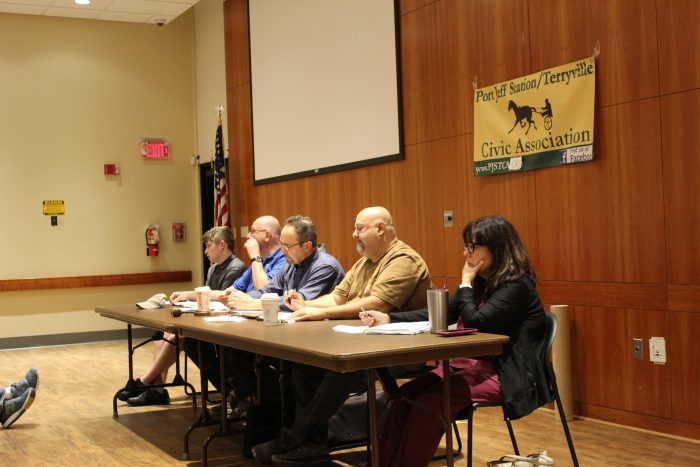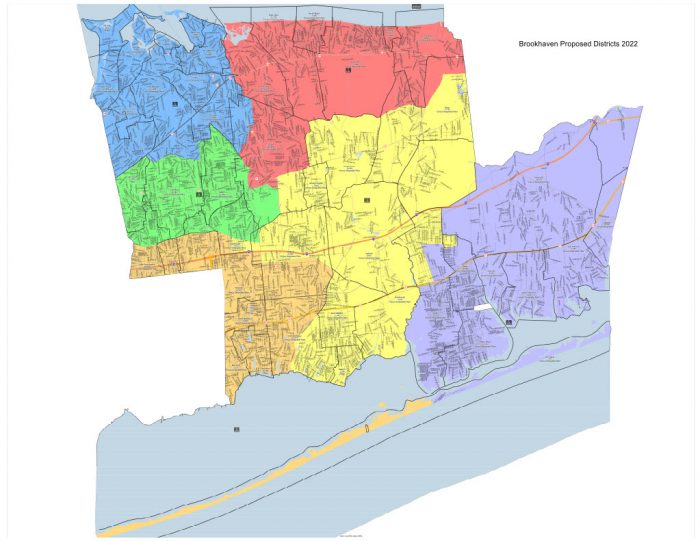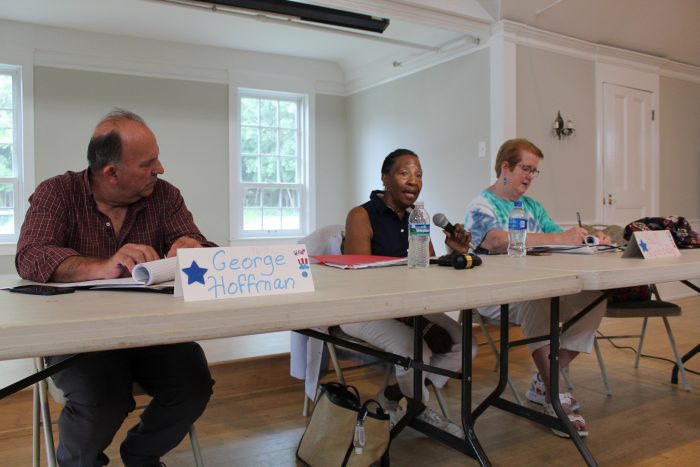The Port Jefferson Station/Terryville Civic Association met Tuesday, Oct. 25, at Comsewogue Public Library for its monthly general meeting covering various topics.
Due to a recent shortage of Suffolk County COPE officers, civic vice president Sal Pitti, whose background is in law enforcement, delivered the public safety report. He concentrated on the crime trend of catalytic converter thefts in the area.
“It’s a multiagency, multilevel thing going on, and we’re not the only ones,” he said. “They’re getting hit upstate. They’re getting hit downstate. They’re getting hit everywhere in New York and in other states.”
The most popular models among auto thieves, according to Pitti, are the older models of the Honda Accord, Honda CR-V, and Ford F-150. Given the uptick in this phenomenon, he announced the Suffolk County Police Department is exploring an auto crimes unit.
“The last time I talked to the commissioner [Rodney Harrison], he told me he’s working on establishing an auto crimes unit … that can get more in-depth, more cross agency and get more information from other places,” he said.
A student representative from Comsewogue School District announced an upcoming Halloween event at the high school. “This upcoming Friday, Oct. 28, from 4 to 6 [p.m.] is Trick or Treat Street at the high school with diverse clubs and organizations creating a safe environment for the young trick-or-treaters,” he said.
With news from the library, Comsewogue director Debbie Engelhardt announced that Andrea Malchiodi has recently assumed the role of the assistant library director.
“Andrea brings excellent experience to the library, most recently having worked at the Lindenhurst Memorial Library as a department head and prior to that at Mastics-Moriches-Shirley [Community Library],” Engelhardt said.
Also making an appearance was Bruce Miller, former Port Jefferson Village trustee. Miller gave a string of updates on the ongoing efforts to electrify the Long Island Rail Road’s Port Jefferson Branch line.
Though MTA is funneling billions of dollars throughout New York City and Nassau County, Miller held that the railroad is showing little concern for the needs of its North Shore riders.
“There’s $10 billion on the table for the MTA, and they don’t show a lot of preference for the Port Jefferson/North Shore line,” Miller said. “They’re stripping off ridership from this line here, who are commuting to Ronkonkoma and some [going] as far as Hicksville or Huntington to get a decent ride.”
Responding to this assessment, Charlie McAteer, the civic organization’s corresponding secretary, concurred. “I think your point is well taken that we’re losing ridership because it’s inconvenient,” he said.
Pitti chimed in, discussing how electrification would tie into an overall plan to redevelop the Lawrence Aviation property. However, according to him, the gears can only begin to turn with a commitment from the MTA-LIRR.
“Everything is set and ready to move forward, but we all know how everything moves,” the vice president said. “We’re basically waiting for the MTA.”
Ed Garboski, president of PJSTCA, updated the members on the Town of Brookhaven’s redistricting process, which concluded on Thursday, Sept. 29. [See story, “Brookhaven town board unanimously adopts new map, concludes redistricting process.”]
Garboski said the Town Board selected a map that constituted the least amount of change for Council District 1. This district encompasses Port Jefferson Station and Terryville. “They made the least amount of change for our area,” he said.
While CD1 remained primarily unchanged by the end of the redistricting process, a tiny sliver of the community east of Pine Street shifted into CD2. However, Garboski suggested this change was understandable.
“Most of the people in the area that got redistricted go to Mount Sinai schools,” he said. “Everything else stays. The [Train Car] Park stays in our area. The revitalization area. All of the things that everyone was concerned about, we have.” Following this outcome, the civic leadership sent a letter of thanks to the Town Board for keeping the PJS/T community intact.
Before adjourning, Garboski and Pitti announced they had sold their houses recently. Within about a year, both will no longer be residents of the area, precipitating a turnover of the civic’s top two posts.
The body passed a resolution to allow the two civic leaders to stay in their seats for the interim period. A special election will likely take place in the fall of 2023.









